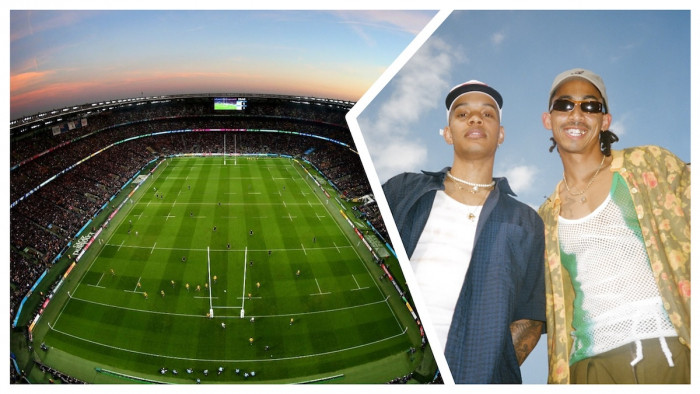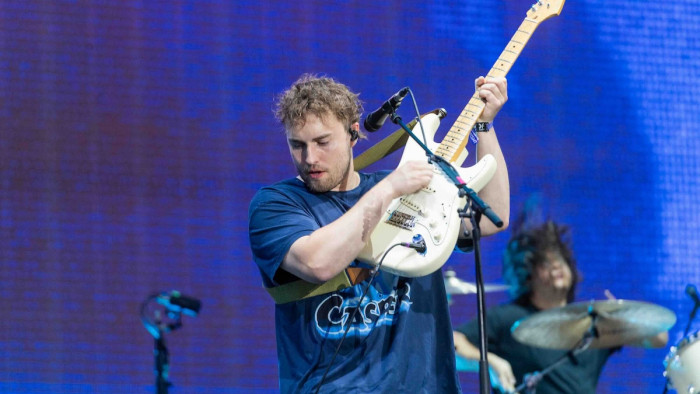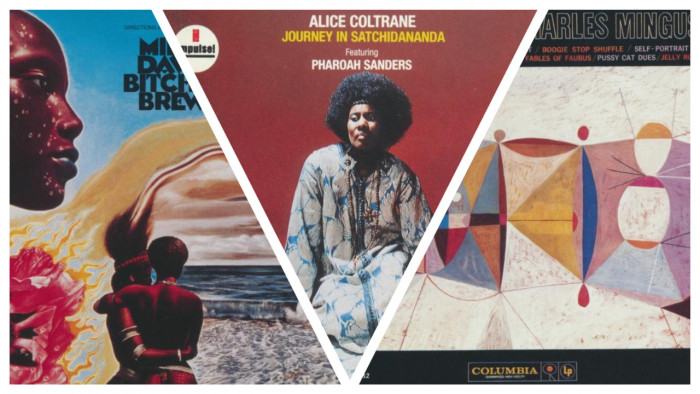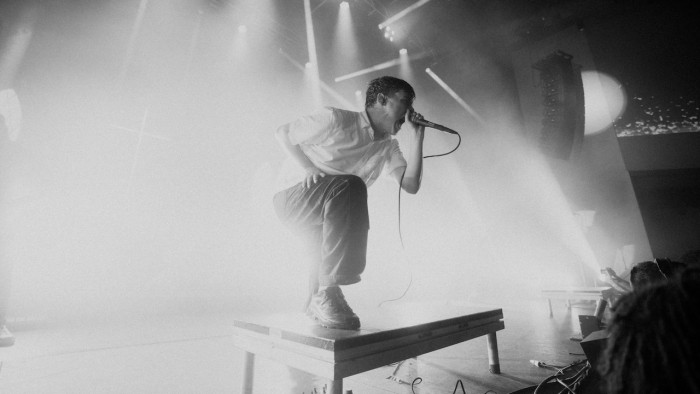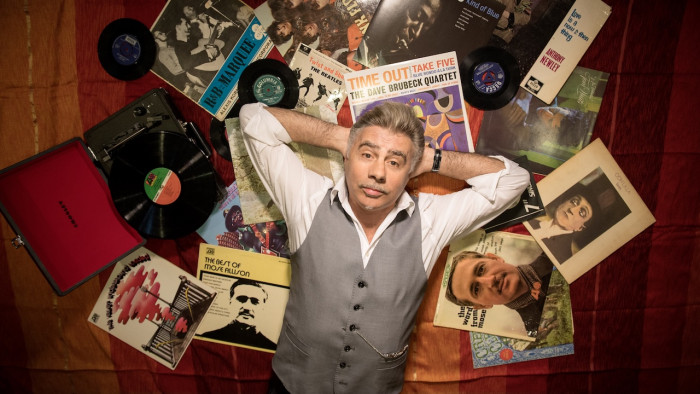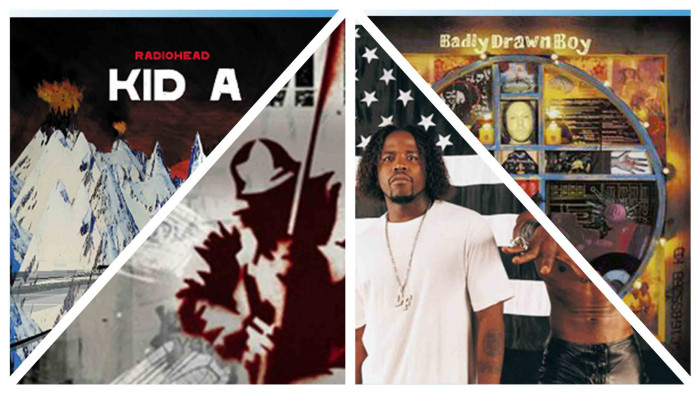We tried to create the mathematically perfect number one single
We've crunched the numbers and figured it out


If you ask 10 people in the street what makes the perfect number one single, nine of them will probably keep walking, unaccustomed to strangers rambling in their general direction for no reason.
But the 10th? Hoooh boy, they’ll humour you for a bit, but they’ll still have absolutely no idea what the answer is.
Cast your mind back through the last decade, and there’s no obvious continuity. The 2010s began with X Factor winner and guy you probably wouldn’t recognise in a line-up of one Joe McElderry at the summit with The Climb, and more than seven years and 200 number ones on, it’s Post Malone featuring 21 Savage at the top.
We’ve had reality show winners (McElderry, Sam Bailey, Matt Cardle), and returning ‘90s stars (Robbie Williams, PJ & Duncan). We’ve had solo singles and charity collaborations, Brits, Americans, Europeans and one New Zealander (Lorde).
But what makes the perfect number one? We’ve crunched the numbers to find out which qualities are most likely to produce a number one in the 2010s.

No one has more number ones in the UK this decade than Tinie Tempah, with seven as lead or featured artist
Is three minutes enough?
In the early days of pop, three minutes was thought of as the perfect length for a pop song.
Even as recently as the ‘80s and ‘90s, a number of iconic number one singles came in below that level, such as Soft Cell’s ‘Tainted Love’, The Jam’s ‘Going Underground’ and ‘Love is All Around’ by Wet Wet Wet.
However, the shorter song may have had its day (for now).
Just 17 of the 213 number one singles this decade have clocked in at three minutes or less, and among those only two spent more than two weeks at the top. Still, one of those two – ‘One Dance’ by Drake feat. Wizkid and Kyla – was the best-selling single of 2016 (the other with more than two weeks at number one was OMI’s ‘Cheerleader’), so there are clearly exceptions.
But don’t worry, it’s not too much of a sea-change.
The average length of a number one is three minutes and 39 seconds, while eight different number ones clock in at exactly 3:23 – including, strangely, Zayn Malik’s solo single ‘Pillowtalk’and his first One Direction number one ‘What Makes You Beautiful’.

Breakdown of number one single length, using radio edits where multiple versions exist
Max Martin’s magic wearing off?
Swedish songwriter Max Martin has seemed to have the magic touch when it comes to penning bangers, having scored his first number one in 1999 with Britney Spears’ ‘Baby One More Time’ and gone from strength to strength after that.
Popbitch wrote about “yet another massive year” for Martin in 2015, suggesting “the hot streak he’s been on since 1999 just doesn’t seem to be cooling off”, but cool off it did – at least in the UK.
Martin and long-time collaborators Dr Luke and Benny Blanco (Lukasz Gottwald and Benjamin Levin) may have written more number ones than anyone else this decade, but none of the trio have not achieved the feat since early 2015 with Ellie Goulding’s ‘Love Me Like You Do’ (also known as ‘that one from Fifty Shades of Grey’) co-written by Martin.
For Gottwald and Levin, the drought goes back even longer – a year longer, to be specific, with ‘Timber’ by Pitbull featuring Kesha their last number one as writers.
Just behind those three, however, are a number of songwriters with plenty of longevity throughout the decade.
Mikkel Eriksen and Tor Hermansen, better known as production duo StarGate, had their first UK number one as writers all the way back in 2000 when Hear’Say hit the top with ‘The Way to Your Love’, and have kept things going throughout the 2010s.
The first of their seven chart-toppers as writers this decade came with ‘Beautiful Monster’ by Ne-Yo, while their most recent (at the time of writing) is Sam Smith’s ‘Too Good at Goodbyes’. The latter, at three minutes and 21 seconds, is right in that song-length sweet spot too.
Broadly speaking, artists performing songs in which they have had no writing input aren’t having as great a time of it now as they were earlier in the decade: of the 12 number ones in 2017, 10 include a writing credit for one or more of the performers, with one of the two exceptions being the Artists for Grenfell charity single in June.

Max Martin at the Spotify Secret Genius Awards
Tried and tested producers
It won’t surprise you to learn the most popular writers of the decade are also among the most popular producers, however there are a few interlopers.
British producer Steve Mac, in addition to co-writing several number ones, worked on the production of no fewer than eight across the decade. These include Clean Bandit’s ‘Rockabye’ (featuring Sean Paul and Anne-Marie) and Ed Sheeran’s ‘Shape of You’, two songs which – between them – held on to the top spot for 22 consecutive weeks from November 2016 until April this year.
However, if you can’t get Steve Mac on the phone, pretty much any Steve will do. Much like a Donald Trump advisory meeting, there are more Steves (19) than women across the decade’s biggest singles.
Failing that, though, you’d do well to try enlisting the services of Calvin Harris.
In addition to his multiple writing credits on number one singles, the Scot has produced seven number ones over the course of the decade, six of which also list him as the main or featured artist: the first was ‘We Found Love’ (with Rihanna) in 2011 and the most recent was ‘Feels’ (with Pharrell Williams, Katy Perry and Big Sean), which topped the charts in several countries this summer.
Tinie Tempah leads the way overall with seven number ones as a performer, though Rihanna (six), Williams (five) and Perry (four) aren’t too far behind. And while Rihanna isn’t right at the top, several of her other singles including ‘Work’, ‘Rudeboy’ and ’S&M’hit the top spot on the other side of the Atlantic despite missing out over here.

More than 60 other producers or production teams have three number ones or fewer this decade
Features closing the gap?
Of the 13 number one singles involving either Tinie Tempah or Calvin Harris, 11 involve a named featured artist.
Looking at that, you might be tempted to think features have dominated the market, but this is not the case.
Since January 2016, 23 different songs have reached the top, 12 of them without a feature, and if you go back to the start of the decade the tally is 131.
Less than 10% (18 of 213) have two or more features (though two of the three hits with three or more reached the top in 2017), so there’s still an argument that less is more.
Still, as collaborations become more prevalent, old-fashioned bands are experiencing less and less success.
With the exception of 2016, where solo artists and bands split the 10 new number ones five apiece, soloists have led the way for number ones every single year of the decade, and fewer than one third of the 37 songs to spend three or more weeks at the top were by bands.

Justin Bieber is the only featured artist on two separate number ones in 2017, ‘I’m the One’ and ‘Despacito’. Only DJ Khaled has two as the lead artist.
What’s love got to do with it?
One area we haven’t yet covered is the song titles.
It’s all well and good writing a song in that 3:20-3:40 sweet spot (or, better yet, getting Max Martin to write it for you), but you’ll need to do more than that if you want success.
Songs about love have always been at the forefront of pop music success, something which Mitski goes into good detail here, with the sub-genre of “songs with the word ‘love’ in the title” spanning more than 60 years from ‘Secret Love’ by Doris Day (1954) to ‘Love Yourself’by Justin Bieber (2015).
In the 2010s alone, there have been 15 different number ones with ‘Love’ somewhere in the title (or 16 if you count ‘Love Yourself’s’ separate non-consecutive stints at number one as two, which we’re not doing), after just 12 over the course of the previous decade.
If you weren’t sure about its dominance, look at it this way: no other word has more than four occurrences, while ‘Let’ and ‘One’ are the only others with more than three.
From that perspective, Ne-Yo’s 2012 number one ‘Let Me Love You (Until You Learn to Love Yourself)’ is perfect: the title includes ‘Love’ (Twice!) and ‘Let’, while Tor Hermansen and Mikkel Eriksen are on board both as co-writers and co-producers.
That’s clearly enough to override the downsides of a song which the numbers say is too long in terms of running time and title length.
Just 19 longer songs reached the top of the charts since January 2010, while the 10-word title – and even the four-word shortened version, if you remove the part in brackets – are above the 2.66-word average. Indeed, just a quarter (53 of the 213 number ones) are four words or longer.

The first number one to feature the word ‘love’ in the ‘2010s’? ‘This Ain’t a Love Song’ by Scouting For Girls
Making the perfect number one
So now we’ve crunched the numbers and figured out what works, here’s our best estimate of the perfect chart-topping single in the UK.
Entitled ‘One Love (Shout)’, the 3:38 banger is a rare collaborative project co-written by Max Martin, Calvin Harris and will.i.am.
None of the three are producers, though – that honour will go to StarGate, who were listening in when the song was written, ready to intervene if required, but had no need.
As for the performer? It shouldn’t really matter, given the quality of the team in the background, but Tinie Tempah and Justin Bieber both know their way around a hit single.
We’ll record two versions: one just with Tinie and one with Bieber involved alongside him, and let the people decide which version makes it to the top.
Hey, it worked for ‘Despacito’.
(Images: Rex Features)

